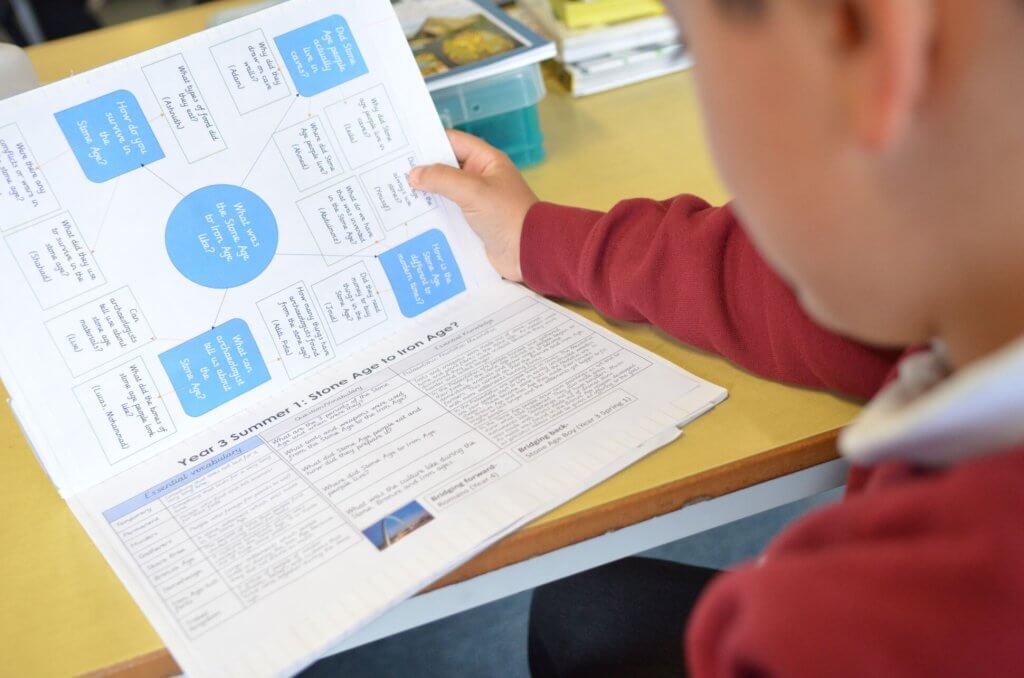June sees the end of the statutory assessment window for 2023-2024, with writing moderation, Phonics Screening Checks and Multiplication Tables Checks. But schools now need to consider what to do with the outcomes from these assessments. Assessment is only useful if we use it to directly impact teaching and learning. That doesn’t mean using the tests themselves to guide or shape our curriculum, but unpicking what the assessments and our pupils’ response to them, can tell us about our provision over time. So, what insights can the 2024 KS2 SATs give you about your school’s whole English curriculum?
Reading
Reactions to the test this year were again mixed, with some schools felt that the first text was much more challenging than previous years, preventing it providing pupils with a confidence boost at the beginning of the test.

Non-fiction texts are often more grammatically challenging and the vocabulary demand is often high. This year’s text, Streaky and Squeaky, was no exception, with 12% of the text’s word count being classed as ‘complex’. The sentence structure was also challenging, with an average of 15 words per sentence.

Some schools felt that the second text, The Girl Who Walked on Air would have been better placed as a first text, with the non-fiction coming second. Although the decoding demand of the second text was technically easier, with fewer complex words and shorter sentences, the length of the text coupled with the inference demand when reading, increased the level of challenge to be above that of Streaky and Squeaky.

This pattern continued with the third fiction text The Leopard, with a longer word count and a higher inference demand combined with the added challenge of a greater proportion of complex words and longer sentences to grapple with.

Key questions to consider in your context:
- Do all children explore a breadth of texts across KS2? Is sufficient time given to fiction, non-fiction, poetry and plays?
- Are pupils used to engaging with texts that have different levels of challenge? Do they have reading resilience?
There were also concerns raised again about the word count, with some schools voicing the opinion that children were being expected to read too much across the assessment. This year, there was a reduction in the overall word count of around 150 words, which brought it under the word counts for the years 2023, 2019 and 2017.

In 2024, children did have longer to answer the questions than in 2023, as the time breakdown below shows. However, this is based on children reading at a fluent rate of at least 90 words per minute; pupils who read less fluently will consequently have far less time to answer the questions about each text.

Key questions to consider in your context:
- How often do pupils have the opportunity to read aloud? What about hearing a good model read aloud?
- How fluent are readers in the key stage? How do you know? What does assessment look like?
- For children not reading at 90 words per minute (with an age appropriate text), what additional support is in place? How is it helping them to catch up?
As one would expect, the test assessed children’s reading using a variety of skills and strategies, with vocabulary knowledge, retrieval and inference the top focuses, followed by summarising. The more complex skills of prediction, relating narrative content and exploring the effect of words and phrases, were not assessed at all across the paper, however comparison was a focus for a number of questions. The skills outlined in the Reading Test Development Framework are of course just the start, as regardless of the questions actually asked, children are automatically assessed on their ability to decode, reading fluency and vocabulary understanding throughout the paper.

Key questions to consider in your context:
- How is background knowledge activated to support reading?
- How is vocabulary taught in school? What strategies do children have to unpick the possible meaning of unknown vocabulary?
- What does book talk look like in your school?
- What opportunities do children have to engage with and respond to texts, allowing them to show understanding across different reading skills and strategies?
Question styles were varied across the three parts of the paper, with some new stems including:
- Who said this and how?
- Tick one box in each row…
- True or false
- Write two/three
- 3 mark question as ‘write three’
- Explain…
- This suggests…
- Match each paragraph to its ‘main content’.
- Which part…
- How did…feel at this point?
- Match feelings to the moment they are felt.
However, on the whole, most question stems were similar to previous years. One key question stem was missing from this year’s assessment, with there being no ‘impressions and evidence’ questions included for 2024 which surprised many.

Key questions to consider in your context:
- Do children know how to respond to who, what, where, when, why and how questions about texts, both verbal and written?
- Are children used to being asked, and asking, a range of verbal questions about texts?
- When written comprehension questions are sometimes used for assessment, are a breadth of question stems and styles used?
As well as delving into the insights the KS2 Reading test can give us, it’s important to also consider what the Grammar, Punctuation and Spelling papers can tell us about our approach to the teaching of writing.
Grammar, Punctuation and Spelling
The Grammar, Punctuation and Spelling test for 2024 was also well received, although as always some of the spellings provoked a little disquiet, with some staff feeling that words such as ‘referring’ and ‘nutritious’ were particularly tricky. Generally, schools seem to be feeling more confident about their projected outcomes in this test, finding the content of the test to be more predictable, as questions are not dependent on the choice of text as for the Reading paper.
Every year the GPaS assessment includes questions that span the full remit of the National Curriculum English Appendices 1 and 2. In 2024, Paper 1 was mainly focused on grammatical terms, word classes and punctuation, even exceeding the percentage range outlined in the GPaS Test Development Framework. Questions targeting verb forms and vocabulary were also significant, with fewer focused on sentence functions, Standard English and combining words and clauses.
| Percentage of Paper 1 – 2024 | Percentage range (of combined Paper 1 and Paper 2) outlined by the test developers’ framework | |
| G1 Grammatical terms/ word classes | 24% | 36 – 50% |
| G2 Functions of sentences | 6% | |
| G3 Combining words, phrases and clauses | 8% | |
| G4 Verb forms, tenses and consistency | 12% | |
| G5 Punctuation | 32% | 14 – 29% |
| G6 Vocabulary | 12% | 4 – 10% |
| G7 Standard English and formality | 6% | Inc. in grammar % above |
It’s important to remember that these assessments not only assess the Year 6 curriculum, but are an assessment of the whole primary curriculum. As in all years, in Paper 1, children encountered questions focused on curriculum content from across KS1 and KS2, with an almost even split across each year group.
| Percentage of Paper 1 – 2024 | |
| Year 1 | 14% |
| Year 2 | 18% |
| Year 3 | 14% |
| Year 4 | 18% |
| Year 5 | 18% |
| Year 6 | 18% |
Although the test covers all of the technical elements of the National Curriculum for English, and contributes to the assessment of writing, it is worth remembering that research shows little correlation between the teaching of de-contextualised, GPaS test style questions and children’s composition. In practice, many more pupils may achieve the expected standard on the GPaS paper than are able to consistently demonstrate it in their independent writing, and care needs to be taken to not prioritise ‘test-style’ questions at the expense of teaching the application of grammar and the craft of writing.
Key questions to consider in your context:
- How is grammar taught? Is it taught in context through clear modelling?
- Is key content recapped and reviewed? Is it fully embedded before moving on?
- How are gaps in previous learning addressed?
- How is grammar assessed? What’s the impact?
In spelling, children were tested on spellings from every year group in KS2, with the majority of spellings focused on LKS2. Whilst not explicitly assessing spelling knowledge from Years 1 and 2, children’s ability to apply their phonics knowledge from these year groups was also crucial to success.
| Percentage of Paper 2 – 2024 | |
| Year 3 | 15% |
| Year 4 | 45% |
| Year 5 | 35% |
| Year 6 | 10% |
The spelling rules tested in 2024 were as follows:
| Spelling Rule | Spelling |
| S37 common exception words | – |
| S38 adding suffixes beginning with vowel letters to words of more than one syllable | replacing referring |
| S39 the /i/ sound spelt y other than at the end of words | symbol |
| S40 the /ʌ/ sound spelt ou | young |
| S41 prefixes | replacing increase |
| S42 the suffix –ation | examination |
| S43 the suffix –ly | frequently |
| S44 words with endings sounding like /ʒə/ or /tʃə/ | texture |
| S45 endings that sound like /ʒən/ | persuasion |
| S46 the suffix –ous | famous |
| S47 endings that sound like /ʃən/, spelt –tion, –sion, –ssion, –cian | solution |
| S48 words with the /k/ sound spelt ch | chaos |
| S49 words with the /ʃ/ sound spelt ch | – |
| S50 words ending with the /g/ sound spelt –gue and the /k/ sound spelt –que | league |
| S51 words with the /s/ sound spelt sc | – |
| S52 words with the /eɪ/ sound spelt ei, eigh, or ey | veins |
| S53 endings which sound like /ʃəs/ spelt –cious or –tious | nutritious |
| S54 endings which sound like /ʃəl/ | social |
| S55 words ending in –ant, –ance, –ancy, –ent, –ence, –ency | reluctance |
| S56 words ending in –able and –ible words ending in –ably and –ibly | memorable |
| S57 adding suffixes beginning with vowel letters to words ending in –fer | referring |
| S58 words with the /i:/ sound spelt ei after c | – |
| S59 words containing the letter string ough | – |
| S60 words with ‘silent’ letters (i.e. letters whose presence cannot be predicted from the pronunciation of the word) | island |
| S61 homophones and near homophones (Years 3 and 4) homophones and other words that are often confused (Years 5 and 6) | queue |
It is also useful to note the placement of the rules within the words assessed:
| Type of Spelling | Percentage Assessed in 2024 (NB some words include more than one rule) |
| Homophones | 5% |
| Rules at the beginning of words | 25% |
| Rules in the middle of words | 20% |
| Rules at the end of words | 65% |
| Silent letters | 5% |
| Suffixes | 25% |
| Prefixes | 25% |
Key questions to consider in your context:
- How is spelling taught? Is it consistent?
- Is dictation used to support pupils to practise and embed spelling learning?
- How are spelling rules and patterns from previous year groups recapped and reviewed?
- How is children’s spelling knowledge assessed? What does this assessment tell you? Are patterns in errors interrogated?
- How are gaps in previous learning addressed?
- Can children apply their spelling learning to their independent writing? Are they fluent in transcription skills appropriate to their year group?
Of course, the Grammar, Punctuation and Spelling test is just one part of writing assessment. Look out soon for our analysis of the 2024 KS2 Writing Moderation cycle.
We’ll now have to wait to see what threshold is announced on the 9th July, and the impact on the number of pupils reaching the expected standard. What’s really important is we use assessment information and analysis wisely. It is crucial that we don’t use the analysis of external assessments to plan our curriculums or teach to the test. Instead we should explore the insights it can give us about how successful our provision for English is as a whole and from that, make adaptations to practice that ensure gaps in learning are addressed for all pupils. This is the focus for our ‘Learning from Assessment in 2024: Implications for Teaching and Learning at KS2’ course, where we’ll delve much deeper into what the assessments tell us, and what they don’t tell us, using this to inform next steps in good practice across the whole key stage.
For more information on how we can support you to develop your approach to the teaching of English, in Year 6 and beyond, please contact our Literacy Team Leader, Laura Buczko at laura.buczko@oneeducation.co.uk
Please complete the form below and we will get in contact as soon as we can to help you with your query.
















